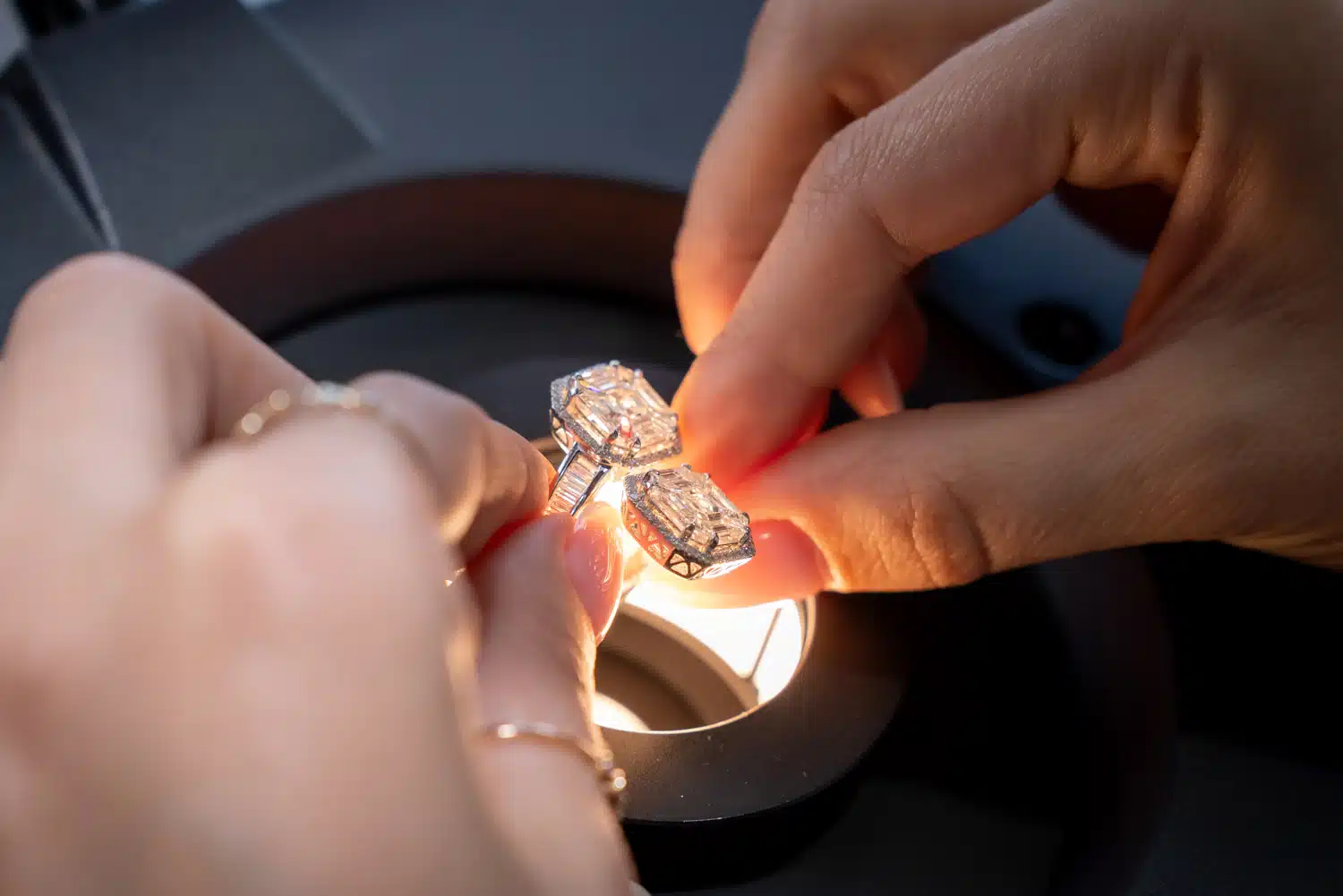
Diamond 4Cs Chart: Understanding Cut, Color, Clarity, and Carat
Introduction to Diamond 4Cs
Diamond grading is an intricate process that takes into account four key characteristics: Color, Clarity, Cut, and Carat Weight. These parameters were established by the Gemological Institute of America (GIA) to provide a standardized method for assessing diamond quality. Each C plays a vital role in determining a diamond’s overall beauty and worth, making it essential for consumers to familiarize themselves with these criteria before making a purchase.
Overview of Each C
Color
Diamond color refers to the presence or absence of color in a stone. The GIA color scale ranges from D (colorless) to Z (light yellow or brown). Colorless diamonds (D-F) are highly valued for their rarity and brilliance diamond 4cs chart, while lower-grade diamonds (G-Z) may exhibit noticeable coloration. The absence of color allows light to pass through the diamond more easily, enhancing its sparkle and fire.
Clarity
Clarity measures the presence of internal and external imperfections, known as inclusions and blemishes, respectively. The GIA clarity scale ranges from Flawless (FL) to Included (I3), with each grade representing varying levels of clarity. Diamonds with fewer inclusions are considered more valuable due to their rarity and enhanced brilliance.
Cut
The cut of a diamond determines its ability to reflect light and sparkle. It is graded based on proportions, symmetry, and polish. An expertly cut diamond reflects light from one facet to another and projects it through the top of the stone, creating that dazzling sparkle diamonds are known for. Cut grades range from Ideal to Poor, with Ideal and Excellent cuts being highly sought after for their superior brilliance.
Carat Weight
Carat weight is a measure of a diamond’s size, not its quality. One carat equals 200 milligrams, and larger diamonds are generally more valuable because they are rarer. However, carat weight should be considered alongside the other 3Cs to determine a diamond’s overall value and appeal.
Detailed Breakdown of Each C
Color
Diamond color is graded on a scale from D to Z, with D being colorless and Z showing noticeable coloration. The GIA’s color grading system is widely accepted as the industry standard, although some diamonds, known as fancy color diamonds, exhibit intense hues such as blue, pink, or yellow. These rare diamonds are graded on a separate color scale.
Clarity
Clarity refers to the presence of internal and external characteristics, or inclusions and blemishes, within a diamond. The GIA clarity scale ranges from Flawless (FL) to Included (I3), with each grade representing varying levels of clarity. Inclusions are natural birthmarks that form inside diamonds as they crystallize under extreme heat and pressure.
Cut
The cut of a diamond is crucial to its overall beauty and value. A well-cut diamond reflects light from one facet to another and projects it through the top of the stone, creating sparkle and brilliance. The GIA grades diamond cut on a scale from Excellent to Poor, assessing factors such as proportions, symmetry, and polish. Different diamond shapes, such as round brilliant and princess cut, have unique cutting styles that affect their brilliance.
Choosing the Right Diamond Based on 4Cs
When choosing a diamond, consider your preferences and budget. For instance, if you prioritize brilliance and sparkle, focus on diamonds with higher cut grades, such as Excellent or Ideal. If size is important to you, look for diamonds with larger carat weights within your desired color and clarity range. Understanding the 4Cs allows you to make an informed decision that aligns with your preferences and budget.
Buying Guide Based on the 4Cs
When buying a diamond, it’s essential to educate yourself about the 4Cs and what they mean for diamond quality. Look for reputable jewelers who provide detailed information about a diamond’s color, clarity, cut, and carat weight. Ask to see a diamond’s grading report from a trusted gemological laboratory, such as the GIA or AGS, to verify its quality and authenticity.
Lab made diamonds, also known as synthetic or cultured diamonds, are created through advanced technological processes that replicate the natural conditions under which diamonds form in the Earth’s mantle.
Future Trends in Diamond Grading
The diamond industry is continually evolving, with advancements in technology influencing how diamonds are graded and valued. Innovations in imaging techniques and artificial intelligence are enhancing the accuracy of diamond grading, providing consumers with more detailed insights into a diamond’s quality. Additionally, consumer preferences are shifting towards ethically sourced diamonds and unique designs, influencing future trends in diamond grading and selection.
Conclusion
In conclusion, the 4Cs—Color, Clarity, Cut, and Carat Weight—are fundamental to understanding diamond quality and value. By familiarizing yourself with these criteria and how they contribute to a diamond’s appearance and price, you can make a confident and informed decision when purchasing a diamond. Whether you’re shopping for an engagement ring, anniversary gift, or personal collection, the 4Cs provide a comprehensive framework for evaluating and selecting the perfect diamond that meets your preferences and budget.








